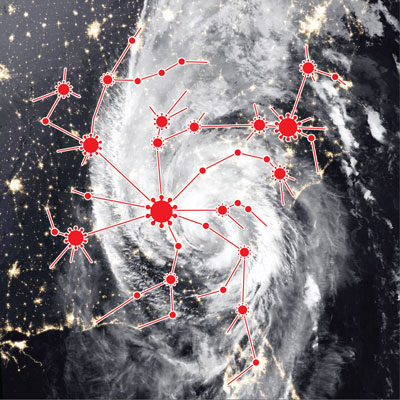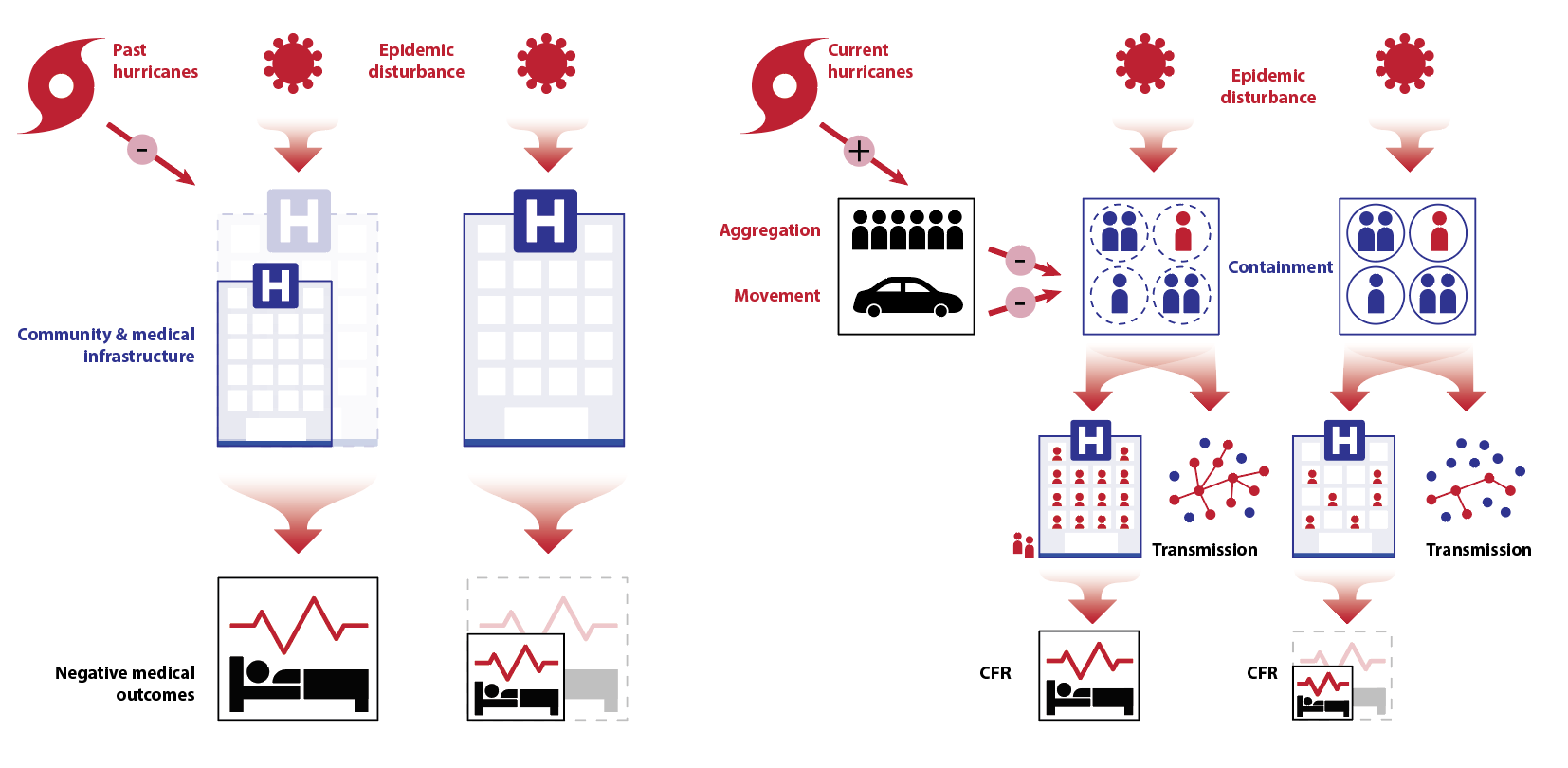Teaming for Interdisciplinary Research Pre-Seed Program
Disasters Colliding: The Epidemiology of Severe Weather Events

Disasters Colliding: The Epidemiology of Severe Weather Events

It is well understood that disparate disasters interact to affect the resilience and prosperity of communities, and disproportionately affects low income families and communities of color. However, given the lack of a common theoretical framework, it is rare for these interactions to be well understood or quantified. We are particularly interested in the interaction of severe weather events (e.g. hurricanes and tornadoes) and epidemics (e.g. COVID-19). Separately, we have worked on a wide range of disasters that have affected populations in the Southeast US, including Hurricanes Irma, Michael, Maria, and Laura and epidemics of SARS-CoV-2 (COVID-19), Chikungunya virus, Zika virus, and West Nile virus. Observing events unfolding in our communities has caused us to conjecture that the interactive effects between catastrophic disturbances and stressors might be much more considerable than previously recognized. For instance, hurricane evacuations increase human aggregation, a key factor that affects the transmission of acute respiratory infections like SARS-CoV-2. Similarly, weather damage to health infrastructure could significantly reduce a community’s ability to provide services to people sick with COVID-19 and other diseases. As globalization and human population and movement continue to increase, and weather events due to climatic changes are becoming more intense and severe, such complex interactions are expected to magnify and significantly impact environmental and human health.
Our team proposes a pilot investigation of two key hypotheses:
H1. Primary disturbances in the past (e.g., Hurricanes Irma, Michael, and Maria) led to community and medical infrastructure damage such that when hit by a secondary epidemic disturbance (COVID-19), negative health outcomes (e.g., case fatality rate) were greater in affected communities compared to controls.
H2. Primary disturbances in the present (e.g., the current onslaught of hurricanes such as Laura and Delta) leads to local aggregation (i.e., shelters, hotels, etc.) and human movement (i.e., evacuation), diminishing the effectiveness of local containment activities leading to higher rates of transmission (measured as epidemic growth rate) AND disruption of medical services (measured as COVID-19 case fatality rate) compared with controls.
Our team will theorize these questions and assemble data from our diverse research groups, including the UGA COVID-19 portal and NOAA NCDC IBTRACS. Results from this study will assist with community preparedness and resilience plans as compounded catastrophic natural weather events have continued to collide with human health. Implications from this project are far-reaching as methods can be further extended to other weather events e.g., severe wildfires in the rural-urban interphase in the western U.S. We anticipate obtaining preliminary data that would then support the application for a major grant from the National Science Foundation.
Team Lead
John Drake
School of Ecology
jdrake@uga.edu
Team Members
Kamal Gandhi
School of Forestry and Natural Resources
Meredith Welch-Devine
Graduate School
Brian Bledsoe
College of Engineering
Marshall Shepherd
Department of Geography
Lynne Seymour
Department of Statistics
Éric Marty
School of Ecology

